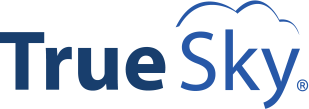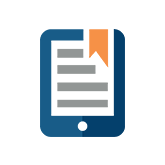Why Rolling Forecasts are Critical in the Era of ‘Internet Time’
When it comes to preparing annual budgets, most companies dedicate weeks or even months to compiling numbers, entering data, and creating plans based on ‘current’ data. However, typically by the time those reports are actually finished, that ‘current’ data isn’t necessarily current anymore. In today’s fast-paced environment, you need data in real-time, and annual forecasts really are not the answer anymore. With the need for well-timed business information, rolling forecasts are now the way of the future.
There are several benefits to rolling forecasts: greater accuracy, improved business decision making, more flexibility and ability to adapt, improved use of time and increased ability to anticipate risks and opportunities. They also make it easier to respond to environmental changes, i.e. exchange rates, political changes, market changes, etc.
If you’ve decided to make the move to a more streamlined, timely, real-time process, here are some tips that will help you transition from annual to rolling forecasts.
- Don’t rush it. If you’ve decided to transition to rolling forecasts, start slowly. Rolling forecasting can be somewhat challenging to implement initially, so consider working first with just a few departments, then involve others as the process becomes more streamlined (and accepted). Remember, Rome wasn’t built in a day. Give your departments enough time to adjust.
- Explain. Change can be scary, so when making an adjustment such as this you need to be sure to explain to all involved in the process why such a change is taking place. Clearly define your goals. Be sure to provide the appropriate training where applicable. Ensure that everyone knows the benefits and why the change is so valuable – this will help motivate all involved to get behind it.
- Be consistent. Once you’ve instituted a rolling forecast system, be sure to remain consistent in its application. Use the same process each time. Set timelines and stick to them as much as possible. This will ensure a smooth transition with lasting results.
- Don’t overdo it. Some may be tempted to include more information than required, especially at the beginning. Try to stay focused on your key drivers so as not to overwhelm the process. This will allow for the most relevant analysis.
- Use the technology available. Often, when merging to rolling forecasts, companies relying exclusively on Excel have problems. While Excel is a great budgeting and forecasting tool, it does have its limitations, and is best enhanced with complementary technology. To get the most from this transition, using corporate performance management software to automate your forecasting helps decrease the strain and leads to more accurate reporting.
True Sky is a corporate performance management system that uses the familiar interface of Excel but with added functionality and built-in controls that allow you to easily and effectively implement rolling forecasts and simplify your budgeting and forecasting process. For more information, please visit www.truesky.com today or call 1 855 878 3759.



